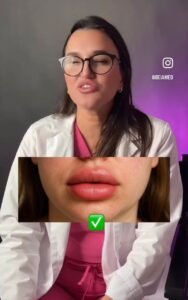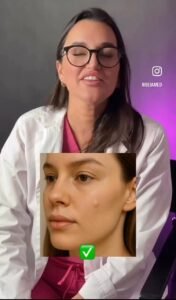What to Expect After Fillers vs When to Worry
Thinking about getting fillers? Here’s what’s normal, and what’s not.
Dermal fillers are one of the most popular non-surgical cosmetic treatments today. Fillers can deliver instant and natural-looking results, but as with any injectable treatment, your post-filler experience can bring a mix of sensations, swelling, and changes that might leave you wondering: Is this normal, or should I be concerned?
Let’s break it down clearly: what you can expect after getting fillers and when you should seek medical attention.
What to Expect After Getting Fillers
Immediately after your appointment, it’s common to experience some mild side effects as your body adjusts to the product. These are temporary and usually resolve within a few days.
1. Mild Swelling and Tenderness
Swelling is completely normal and often peaks within the first 24 to 48 hours. You may also notice slight tenderness or soreness around the injection sites, particularly in areas such as the lips or cheeks, where the skin is more delicate.
2. Small Lumps or Firmness
You might feel small bumps under the skin right after treatment. These usually smooth out as the filler settles and integrates with your natural tissue.
If you were treated in areas like the lips or under the eyes, the skin might feel slightly uneven or firm at first, but it should soften within a week or two.
- Minor Redness or Bruising
Because fillers involve tiny needle insertions, light bruising and redness can occur. The intensity varies depending on your skin type and how your body heals, but most marks fade within 5–7 days. - Gradual Results
While some results are visible immediately, your final look often takes 10–14 days to fully develop. This is because swelling must subside and the filler needs time to settle evenly beneath your skin.
So if you’re assessing your results too soon, give it a little time.
When to Worry After Fillers
While dermal fillers are generally safe when administered by a qualified medical professional, complications can occasionally occur. Recognizing the warning signs early is crucial to preventing serious issues.
- Severe or Increasing Pain
Some mild tenderness is normal, but sharp, throbbing, or severe pain is not. If you feel intense pain that worsens over time, it could be a sign of vascular compromise (when filler accidentally blocks a blood vessel).
This requires immediate medical attention.
2. Skin Color Changes (Gray, White, or Pale Patches)
If the skin around the injection site starts turning grayish, white, or bluish, it may indicate that blood flow is being restricted. You might also notice your skin feels unusually cold to the touch in those areas..
3. Fever or Signs of Infection
Warmth, redness, and swelling that persist beyond a few days—or any fever—could signal an infection. Never try to treat it on your own; contact your injector or a healthcare provider immediately.
How to Ensure a Safe Filler Experience
The best way to minimize risks and maximize results is to choose a qualified injector like BEIAMED. We are medically trained, use FDA-approved products, and conduct a thorough consultation before your treatment.
Follow your aftercare instructions carefully, avoid strenuous workouts, alcohol, or saunas for the first 24–48 hours, and don’t touch or press on the treated areas unnecessarily.
Your safety always comes first. When done by a professional, fillers can beautifully enhance your features and boost your confidence.
Meet Wanda Fernadez, celebrity aesthetic consultant and founder of BEIAMED. Wanda specializes in personalized skin and body treatments that deliver natural, confidence-boosting results. Wanda can help you understand exactly what your skin needs-and what it doesn’t.
Book your Consultation with any of our Master Injectors
You can also text Wanda your photos directly via WhatsApp.
We offer financing at 0% interest. During your consultation, our experts will discuss your desired outcome and create a customized treatment plan. You can visit our Instagram pages to see real-life results at Beiamed and LuxMedMiami.




